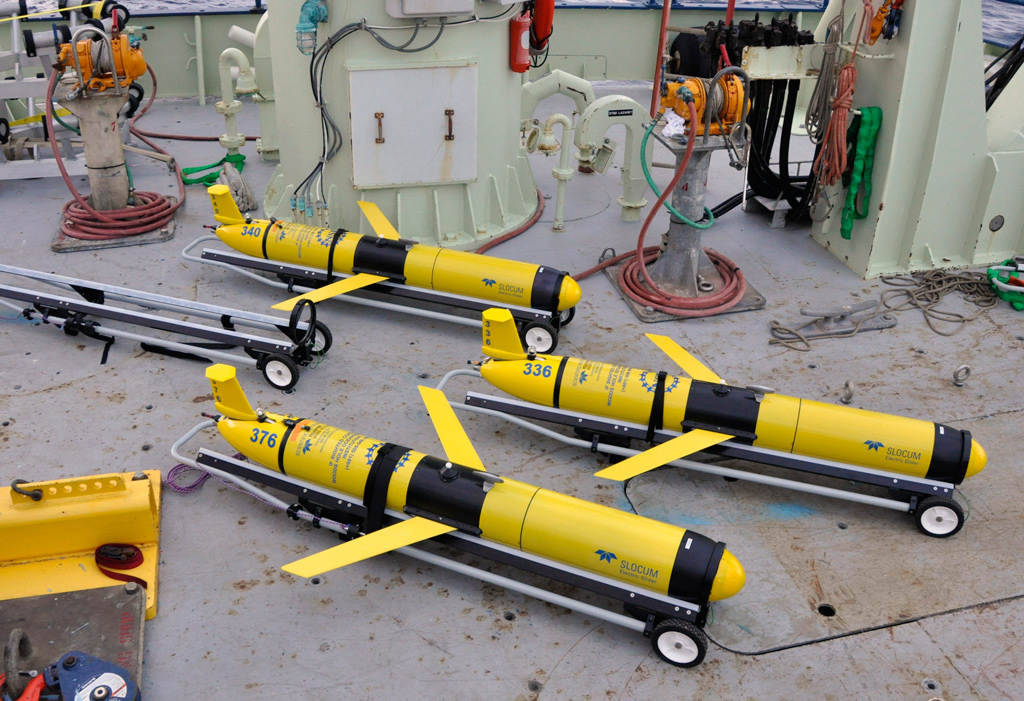Gliders
Mobile platforms, such as Gliders, provide much-needed flexibility in ocean observations as they allow for the movement of sensors through the water in three-dimensions.
Buoyancy-driven, battery-powered gliders change their volume by pumping to or from an oil-filled bladder; when they dive or rise, the glider’s wings achieve lift allowing the glider to fly forward through the water. These mobile platforms can achieve speeds of about one tenth of those of the AUVs or ~25 to 35 centimeters/second.
Gliders can shift their internal mass to change pitch and to roll and to control their track; some gliders also use a rudder to steer. At the surface, gliders acquire position information using GPS and transmit data and receive commands via satellite. The OOI gliders are smaller and lighter than the OOI AUVs.
Gliders are used throughout the Coastal Endurance and Pioneer and Global Irminger Sea and Station Papa Arrays. While there is some diversity in the glider missions and capabilities across the OOI, efficiencies are realized by coordination of and commonality in the glider sensor payloads, operations and maintenance, and interfaces with OOI’s Cyberinfrastructure.

